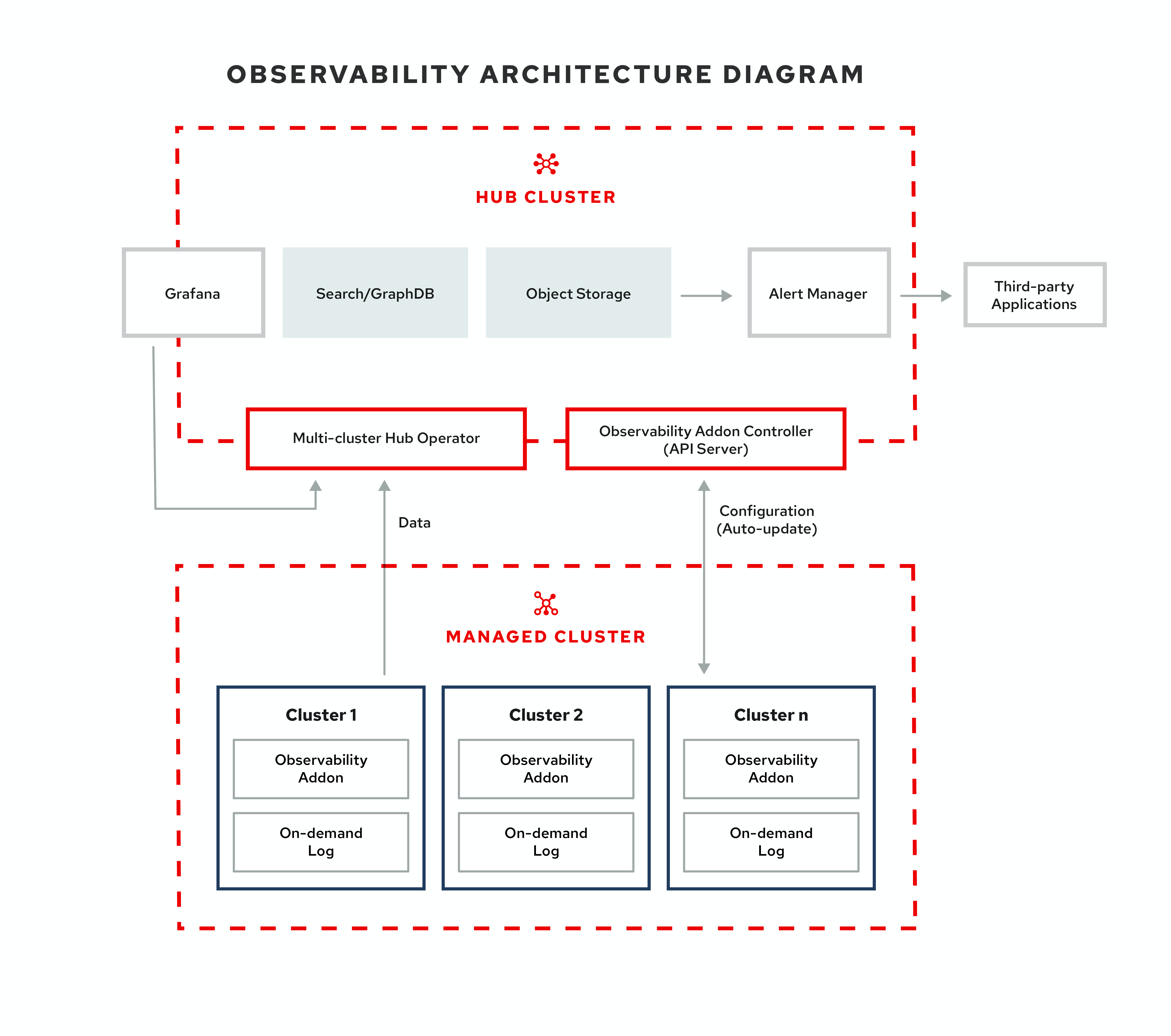第1章 Observing environments
You can use Red Hat Advanced Cluster Management for Kubernetes to gain insight and optimize your managed clusters. Enable the observability service operator, multicluster-observability-operator, to monitor the health of your managed clusters. Learn about the architecture for the multicluster observability service in the following sections.

1.1. Observability service
By default, observability is included with the product installation, but not enabled. Due to the requirement for persistent storage, the observability service is not enabled by default. Red Hat Advanced Cluster Management supports the following stable object stores:
- Amazon S3 (or other S3 compatible object stores like Ceph)
- Google Cloud Storage
- Azure storage
When the service is enabled the observability-endpoint-controller is automatically deployed to each imported or created cluster. This controller collects the data from Red Hat OpenShift Container Platform Prometheus, then sends it to the Red Hat Advanced Cluster Management hub cluster.
Note: In Red Hat Advanced Cluster Management the metrics-collector is only supported for Red Hat OpenShift Container Platform 4.x clusters.
The observability service deploys an instance of Prometheus AlertManager, which enables alerts to be forwarded with third-party applications. It also includes an instance of Grafana to enable data visualization via dashboards (static) or data exploration.
Customize the observability. You can create custom recording rules or alerting rules.
For more information about enabling observability, see Enable observability service.

